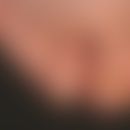Synonym(s)
HistoryThis section has been translated automatically.
DefinitionThis section has been translated automatically.
Very rare X-linked recessive inherited ectodermal malformation syndrome.Clinical symptoms in detail are:
Congenital follicular ichthyosis, alopecia, absent eyebrows and eyelashes, and (occurring in the first year of life, infancy or early childhood) photophobia. Another classic symptom is non-scarring complete hairlessness (atrichia) of the body.
Newborns may have varying degrees of collodion membranes (see collodion baby below).
Less common are: ichthyotic plaques, cheilitis of the corners of the mouth, nail bed inflammation, nail dystrophy, hypohidrosis and atopic eczema are other possible symptoms. Palms and soles are usually not involved. Superficial ulcers of the cornea lead to its progressive scarring. Progressive vascularization of the cornea results in loss of visual acuity in male patients.
Follicular cornification anomaly may be associated with atopic diathesis, chronic lacrimation, cataract, horizontal nystagmus, astigmatism, and myopia. Recurrent infections are common.
In a few patients, mild to severe intellectual deficits, short stature, microcephaly, seizures, dysmorphia (balcony forehead, large ears), choanal atresia, split hand, abnormalities of the intestinal tract (omphalocele, Hirschsprung disease (congenital aganglionic megacolon), small bowel stenosis, inguinal hernia, and abnormalities of the kidneys, heart, and vertebrae have been described. Less commonly, cryptorchidism or hypospadias have been described.
You might also be interested in
Occurrence/EpidemiologyThis section has been translated automatically.
Very rare; about 50 cases have become known in international literature.
EtiopathogenesisThis section has been translated automatically.
Present is a gene defect in the MBTPS2 gene (membrane bound transcription factor peptidase, site 2) which is placed on Xp22.12-p22.11. The mutations cause disturbances in cholesterol homeostasis and endoplasmic reticulum stress response. The following other syndromes are associated with mutations in this gene:
- Olmsted syndrome (OMIM: 300918)
- BRESHECK syndrome (OMIM: 308205)
- Keratosis follicularis spinulosa decalvans (OMIM: 308800)
- X-linked osteogenesis imperfecta
ManifestationThis section has been translated automatically.
ClinicThis section has been translated automatically.
The most striking feature of the disease is the clear hypotrichosis with only short grown hairs as well as a considerable photophobia. The integument is otherwise dry. On the trunk and the extremities a dense, very pronounced follicular hyperkeratosis (keratosis follicularis) is detectable. Incompletely expressed are alopecia of the eyebrows, abnormalities of the cornea, cataract, cheilitis angularis, carious teeth and mental retardation.
DiagnosisThis section has been translated automatically.
The clinical picture and the analysis of the MBTPS2 gene lead to the diagnosis.
TherapyThis section has been translated automatically.
Symptomatic depending on the organ infestation. Skin care with topical keratolytics, emollients and urea preparations. Some patients showed a moderate response to treatment with low-dose acitretin. Essential is the intensive moisturization of the ocular surface. The vascularization of the cornea cannot be influenced by topical corticosteroids.
Progression/forecastThis section has been translated automatically.
Different forecasts. Some patients die prematurely in the neonatal period. Other patients have a normal life expectancy. Potential loss of visual acuity leads to loss of autonomy. Main cause of death are cardiac and pulmonary complications.
Note(s)This section has been translated automatically.
Besides X-linked inheritance (new mutations are also possible), few cases with autosomal dominant inheritance have been described.
LiteratureThis section has been translated automatically.
- Ferrari B et al. (2017) Ichthyosis follicularis with alopecia and photophobia syndrome (IFAP): A Case Report. Dermatol Online J 15:23
- Fong K et al (2015) Ichthyosis follicularis, atrichia, and photophobia syndrome associated with a new mutation in MBTPS2. Clin Exp Dermatol 40:529 532.
- Hwang YH et al (2014) Atopic dermatitis with ichthyosis follicularis, atrichia, and photophobia syndrome: a case report. Allergol Int 63:279-281.
- Jiang Y et al (2019) A novel mutation in MBTPS2 causes ichthyosis follicularis, alopecia, and photophobia syndrome. Mol Genet Genomic Med 7:e812.
- Irurzun I et al. (2021) Ichthyosis follicularis, atrichia and photophobia (IFAP) and hereditary mucoepithelial dysplasia: Two syndromes that share a common clinical spectrum. Pediatr Dermatol 38:568-574.
- Mc Leod JMH (1909) Thress cases of "ichthyosis follicularis" associated with baldness, Br J Drrmatol 21: 165-189.
- Murase C et al (2021) Hereditary Mucoepithelial Dysplasia and Autosomal-Dominant IFAP Syndrome Is a Clinical Spectrum Due to SREBF1 Variants. J Invest Dermatol 141:1596-1598.
- Tsolia MN et al (2005) Ichthyosis follicularis with alopecia and photophobia in a girl with cataract: Histological and electron microscopy findings. Acta Derm Venereol 85: 51-55
Outgoing links (6)
BRESHECK syndrome; Collodion baby; Hypotrichosis; Keratosis follicularis spinulosa decalvans; MBTPS2 Gene; Olmsted syndrome;Disclaimer
Please ask your physician for a reliable diagnosis. This website is only meant as a reference.




